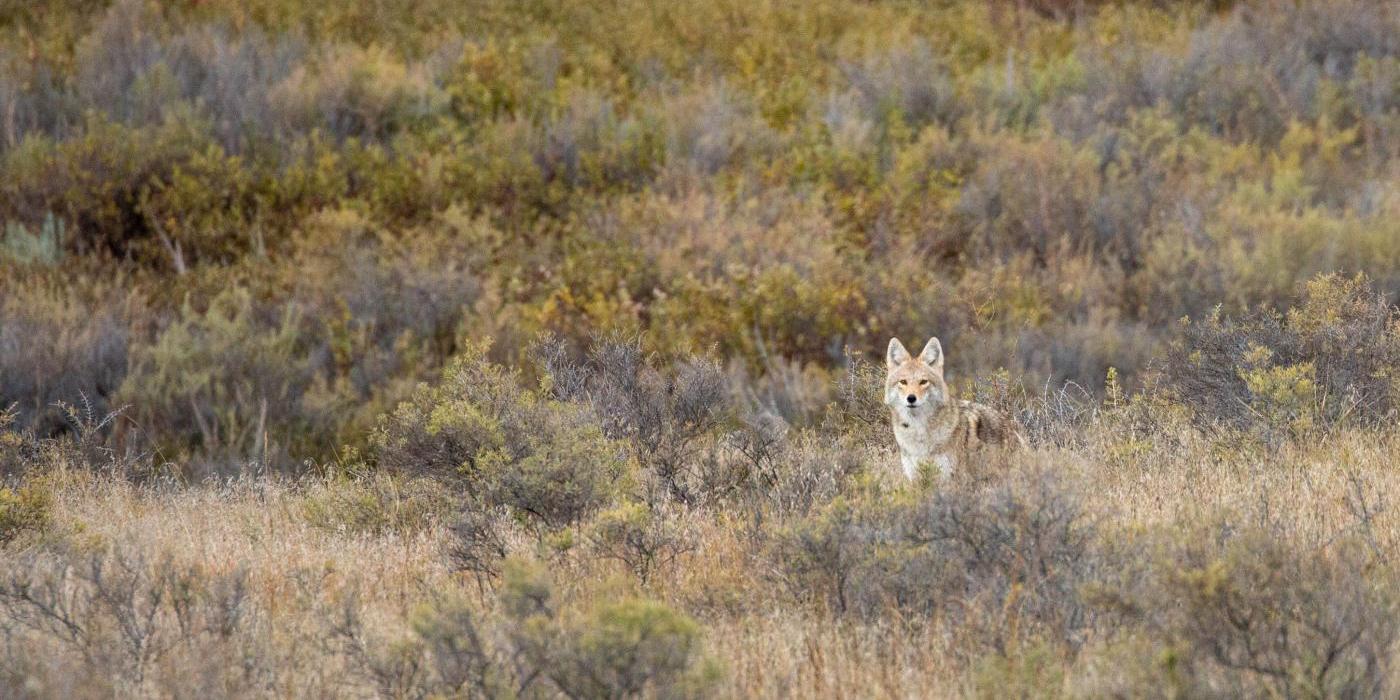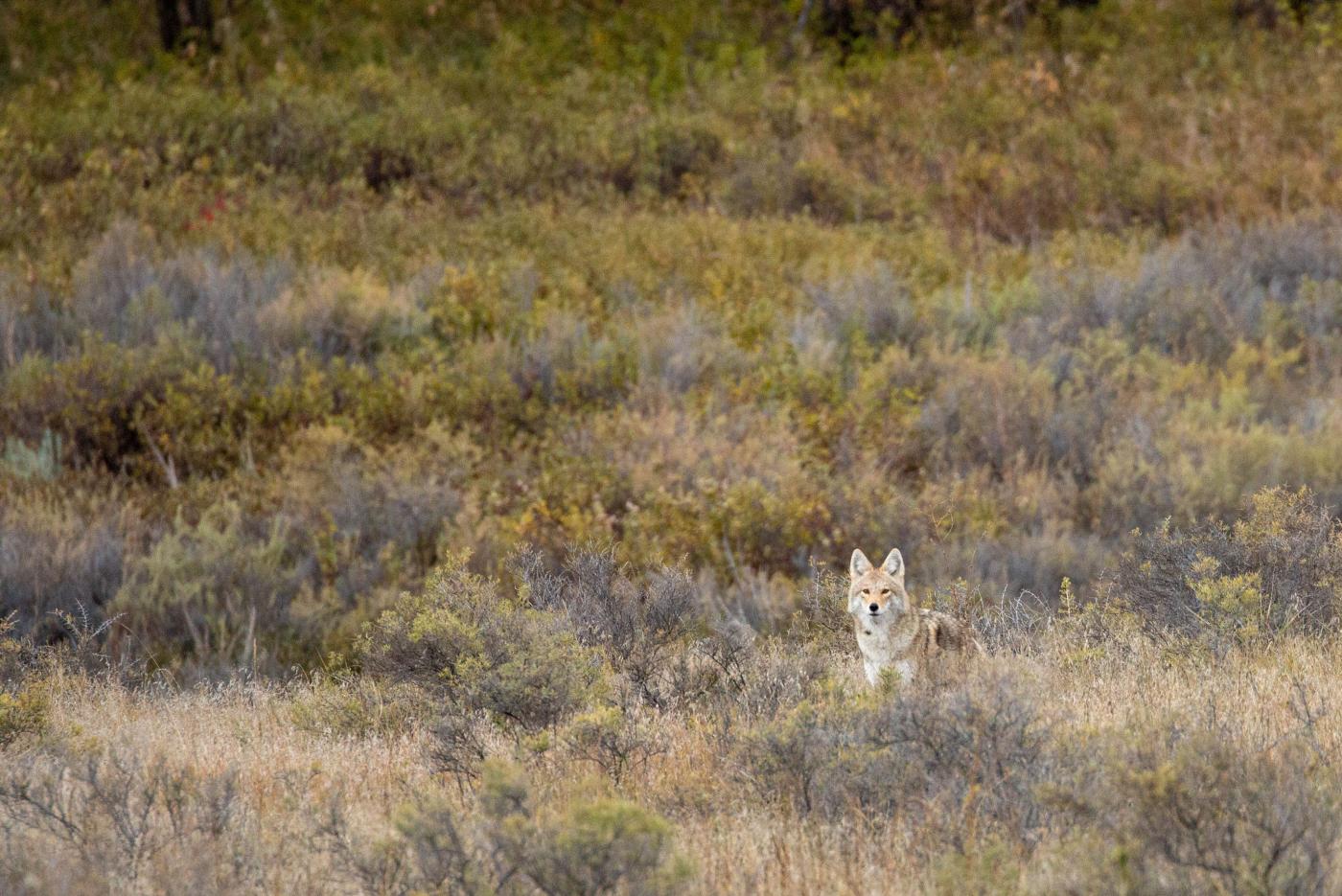Connecting with Coyotes on the Prowl

In Virginia’s Shenandoah Valley, eastern coyotes join the ranks of top predators, along with black bears and foxes. Still, these clever canines face threats in their native habitat. Their daily migrations take them over roads and private lands, where the likelihood of human-animal conflict is high. Using GPS collars, Smithsonian Conservation Biology Institute scientists—led by biologist Joe Guthrie—are about to embark on a study to piece together the movements of coyotes on the prowl.
This project is a collaboration across the Smithsonian Conservation Biology Institute, with Center for Species Survival, Virginia Working Landscapes, Conservation Ecology Center, Movement of Life Initiative and Global Health Program scientists all lending their knowledge and expertise to this study.

What sparked your interest in studying coyotes?
As far as predators go, coyotes are one of the most resourceful and resilient. On the East Coast, they play an important role in controlling the populations of small mammals, especially rodents. Somewhat like a black bear, coyotes are generalists and will eat plants as well as smaller animals, but they can also specialize in hunting certain species of prey.
The latter has earned them a bad rap with some folks. Coyotes are not only a management concern for Virginia landowners raising sheep, goats, cattle and other livestock, but also for our animal care staff at the Smithsonian Conservation Biology Institute who are managing herds of some of the rarest endangered species on earth.
How are you tracking coyotes in Shenandoah Valley?
This fall, we are working with project partners from the Movement of Life program to place GPS collars on five adult coyotes. Each collar is outfitted with a cell phone chip, which sends us a text message with a package of locations every two hours. We also place ear tags on the animals, which allows us to monitor them remotely via camera traps. That way, even if an animal is a juvenile and is too young to receive a collar, we can still track its movements.
What do you find most exciting about this research?
Knowing the coyotes’ movement patterns, denning behaviors and pack boundaries can help show us where the “hot spots” of human-coyote conflict are located. We’re hoping this study will shed some light on how roads and fencing impact the movements of these wide-ranging animals. All wide-ranging wildlife have to navigate roads, and we see evidence of how tough that can be anytime we spot a dead or injured animal on or near the roadway.
What can you learn about coyote behavior from the GPS collars?
The way coyotes fluctuate between being in a pack versus being on their own is really fascinating to me. We anticipate that some of the coyotes we’re going to collar are transients—that is, individuals who are not part of a pack. Some transient coyotes will hang around with a pack for months at a time, then suddenly shift their range. I’m keen to see how many transient coyotes may be tagging along the periphery of a pack trying to pick off a mate.
Interestingly, if you remove the alpha pair from a pack, the adults that have not bred previously will reproduce and try to establish their dominance. That is why hunting coyotes is actually a sure-fire way to quickly increase the population! It will be good to know who the alpha pairs are and how many live around here.
What did you learn from the coyote you collared last spring?
We learned quite a few surprising things from her! She was not with a pack when we collared her, which suggests that she was indeed a transient coyote. In tracking her travels, we were quite amazed at her mobility, given that she had suffered hip damage and a compound fracture on her right foreleg that had fused back together. It is likely that she sustained these injuries as a result of being struck by a car. Interestingly, she didn’t seem to show any ill effects from them. The day after we collared her, she was seven miles away!
She kept a very brisk pace from spot to spot. She appeared to favor farmland and open land over more rugged, wooded hillsides and higher elevation landscapes. We were a little uncertain what movements we would see from an animal that had some pretty grievous wounds, but she was quite mobile and resilient.
What challenges do you anticipate in the upcoming study?
We are experienced trappers, but it can be tough to outsmart these very wary animals. Trapping coyotes can be a humbling experience because they are very good at noticing out-of-place smells I might leave on the trap or that might be on the clothes I wore when I set our traps. Those challenges are an element of this study I really enjoy. It’s all about figuring out the animals’ patterns and finding the right places to set traps.
What are you most looking forward to this fall?
Getting out into the field and collaring the coyotes is just the first step. Once the data starts rolling in, it will be exciting to piece their movements together to form a more complete picture of the density and abundance of the population.
Beyond the exciting field work, I’m very excited to harness the expertise from across the Smithsonian Conservation Biology Institute. This project has brought together colleagues from the Conservation Ecology Center who are experts in deploying GPS tracking collars and analyzing the data they provide; with the assistance of our Global Health Program colleagues, we will be able to monitor the coyotes we collar for disease; and we are led by Dr. Nucharin Songsasen who is acting head of the Center for Species Survival. And, following our pilot program, we hope to partner with private landowners to study the local landscape outside of SCBI.
This story appears in the October 2019 issue of National Zoo News.


